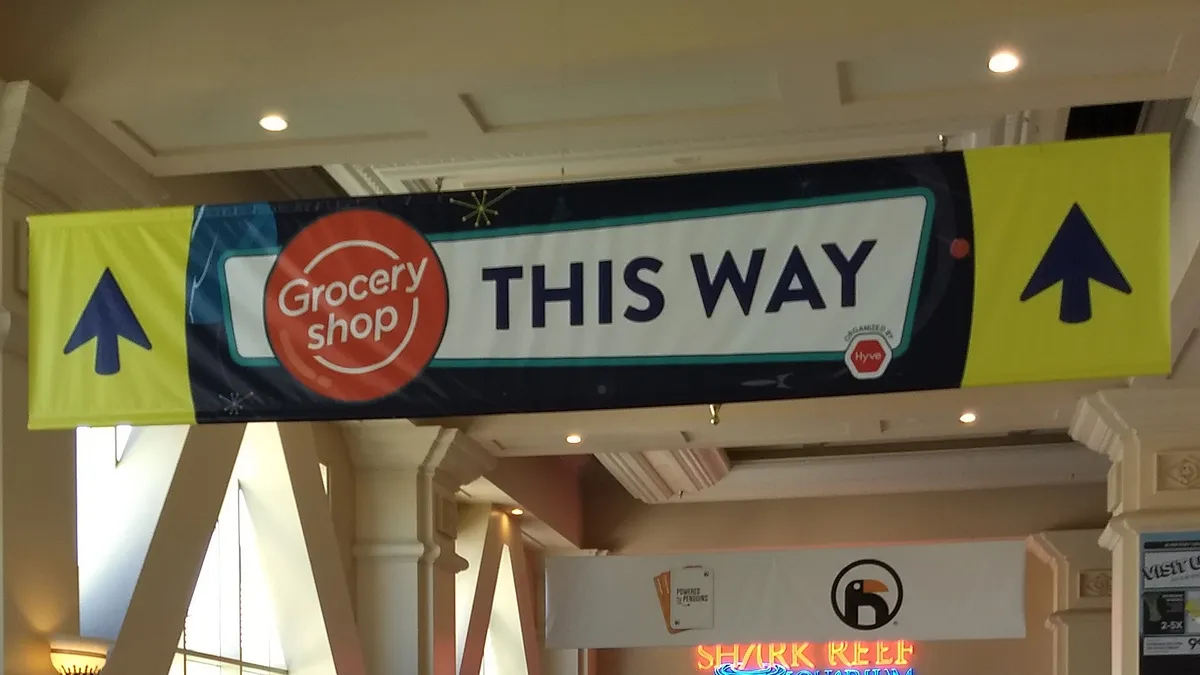Dive Brief:
- As Amazon and hard discounters like Aldi and Lidl expand their footprint, the battle for market share will intensify throughout the U.S., ushering in a new era of supermarket pricing wars, according to Supermarket News.
- Ken Ouimet, CEO and founder of Engage3, a California-based price optimization firm, warned grocers should be careful when engaging in price wars. Retailers should know their competition and their own stores’ strengths. He said when they do target another company, they should do so decisively and discreetly.
- As an example, Ouimet pointed to Kroger, which in 2004 began a pricing strategy that focused on its most loyal customers. The strategy fended off Wal-Mart in many key markets, and continues to deliver returns for the Cincinnati-based retailer.
Dive Insight:
Prolonged food deflation has forced many retailers to engage in pricing wars to maintain market share. As deflation eases — which by some accounts is already happening — retailers will still need to be competitive on pricing. But they will also need to be more deliberate, and choose their battles carefully.
Meeting low prices with low prices isn’t always a sound strategy. Fifteen years ago, Kmart went toe to toe with Wal-Mart and its "everyday low price" strategy. Kmart, which operated mostly in suburban and urban markets, struggled to keep pace with the Bentonville-based retailer, which had grown rapidly in rural markets. KMart eventually had to file for bankruptcy.
Retailers need to know their strengths and how they are different from their competitors, and then zero in on those areas. In its most recent earnings report, Tops Markets discussed two holiday pricing promotions that helped the company retain market share. Tops had enjoyed success with the promotions in the past, and knew its customer base could be motivated to spend even more in its stores during Christmastime.
Amazon, which “can change a price in 90 seconds,” according to Ouimet, is forcing retailers to be fast but careful with their pricing strategies. Many retailers, he noted in his presentation, still take weeks to implement new prices — an inefficiency that makes them vulnerable to e-commerce giants along with other retailers that are using technology to quickly update how much they charge customers.
Kroger is one retailer that’s increasingly relying on technology to enhance its pricing. This includes a pilot store model that uses in-store sensors to recognize customers, then personalizes prices based on their shopping history. It’s a strategy that brings the agility and customization of e-commerce to brick-and-mortar stores — and it’s the sort of tactic retailers may eventually need to stay ahead of Amazon as well as other grocers.










